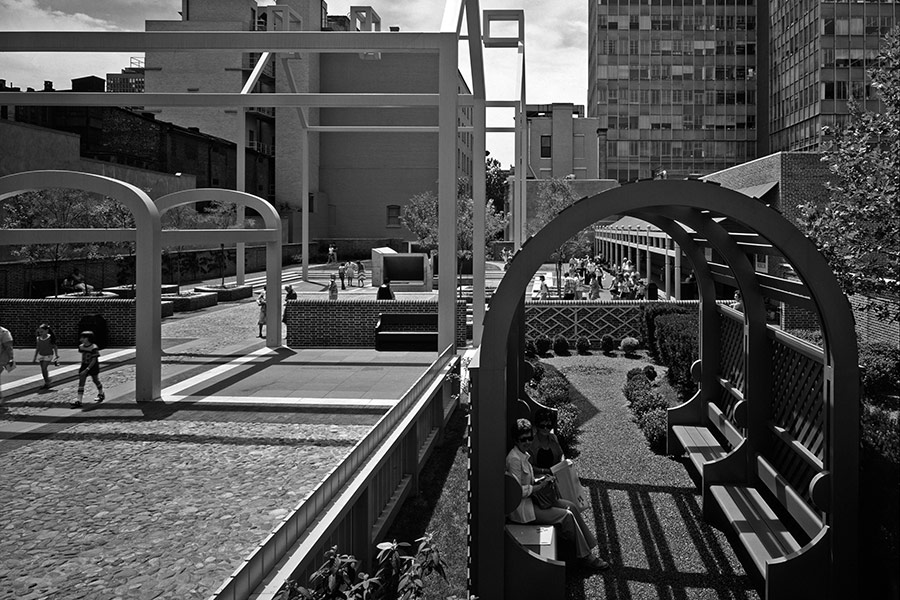
Writings on Architecture and the City
By George Baird
Artifice Books on Architecture, $30
Writings on Architecture and the City by Canadian architect George Baird is a six-chapter long compilation of his texts published between 1969 and 2013.
Baird begins with the discussion of architecture and semiotics in his texts “La Dimension Amoureuse in Architecture” (1969) and “The Dining Position: A Question of Langue and Parole” (1976) that document his search for “a deeper and more articulate illumination for the social and cultural consequence of built-form than has previously been possible.” In “A Critical Reflection on the Theory and Practice of Architectural Symbolism in the Work of Venturi, Rauch and Scott Brown, and their Colleagues” (1976), Baird declares the “undervalued efforts of the remarkable group of American architects around Robert Venturi” as “the consequential object of critique.” He concludes in “Semiotics and Architecture” (1998) that the impact of neo-avant-gardist and phenomenological attacks on postmodernism had left architecture criticism unable to “any longer sustain substantial new design creativity.”
In the second chapter, “Architectural Theory Between Structuralism and Phenomenology,” Baird recalls Alvar Alto’s work in his 1970 essay on Alto’s “profundity and seriousness” as a “real historical anomaly.” In “Rome and Modern Architecture: A Personal Reminiscence” (2000), Baird reflects on his first visit to Rome and concludes that if his “hypothesis on the closure of modernity in our time has any merit…we might well be ready again to learn ‘some lessons of Rome.’” Finally in the text “On the Phenomenology of Spatial Sequences: Frank Gehry’s Disney Hall and Hans Scharoun’s Berlin Philharmonic” (2012), Baird announces his renewed “commitment to a mode of criticism that is resolutely personal, first-hand, and experiential; in short: phenomenological.”
Bauhaus Dessau with its characteristic projecting balconies.
|
With the third chapter Baird focuses on his research on urban morphology and building typology at Harvard’s Graduate School of Design and the University of Toronto in the text “Theory: Vacant Lots in Toronto and in Studies on Urban Morphology in North America” (1988). Then with “Mutant Urbanity: Revising Las Vegas” (2004), Baird analyzes Las Vegas’s contemporary architectural urban form and urban design as public policy and presents “Thought on ‘Agency,’ ’Utopia,’ and ‘Property’ in Contemporary Architectural and Urban Theory” (2013), a synthesis of his “apparently diverse interest in urban form and in political theory.”
In the fourth chapter, Baird presents a critical biography of four of his colleagues reflecting first on Rem Koolhaas’s critical method as well as on their personal relationship starting with “Les Extremes Qui se Touchent” (1977), and ending with the “Open Letter to Koolhaas.” Subsequently he analyses Ignasi de Solà-Morales’s methodological combination of post-structuralism and phenomenology and then concludes in “Oppositions in the Thought of Colin Rowe” (1997) that the “larger intellectual and historic project of Rowe’s that is not only still incomplete but also not completable.” Finally in “A Promise as Well as a Memory: Towards an Intellectual Biography of Joseph Rykwert” (2002), Baird explains Rykwert’s effort to “bring to the conscious awareness of his contemporaries, the implications and potential consequences of the assumptions lying within the beliefs, social forms and artifacts that form their horizon of existence, however individualized or however collective those forms at first seem to be.”
In the fifth chapter, Baird focuses on public space, discussing Machado and Silvetti’s confrontation of the question of the public dimension of architecture in “On Publicness and Monumentality in the Work of Machado and Silvetti” (1994). In “Exemplary Projects” (1999), Baird looks at public space as understood in the Berlin Free University Project by Woods, Candilis, Josic, which to him continues “to offer us the model of a project that seeks to innovate simultaneously in the spheres of the social, the programmatic, the formal, the urban, and the technological.” Finally in “The New Urbanism and Public Space,” (2001) Baird asks to avoid the concepts of new urbanism and post-urbanism and declares public space a key component of urban form.
In the sixth and final chapter, Baird attempts to bring clarity on an “unfolding divergence of opinion between two important generations of thinkers on the scheme of American architectural theory” and calls “for much more careful reflection from us all.”
The book ends with a question: Why can’t architecture just be happy? Baird’s answer is that “even if architecture itself ‘can’t just be happy,’ it does have the capacity to find numerous, engaging ways to insert itself into the consciousness of its users, so as to evoke responses that might well be ‘happiness.’”
With Writings on Architecture and the City, George Baird has created a critical architecture autobiography that aims to make a deeper argument for the larger project of socially and culturally responsible architecture theory and practice.